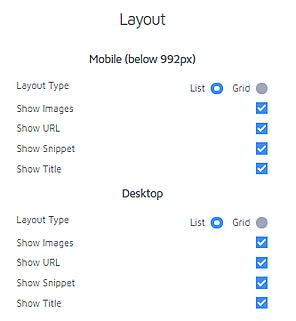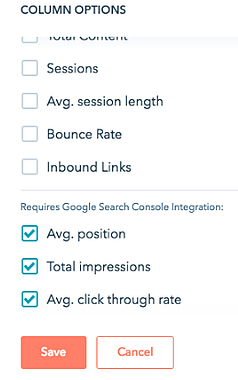
The challenges of HubSpot site search
HubSpot is an inbound marketing and sales platform that businesses use to optimize their online presence and boost their SEO. Its easy-to-customize interface and wealth of customer support has made it a popular solution for many organizations to ease their website woes.
However, the promise of shiny new leads and increased conversion rates can distract even savvy companies from minor HubSpot flaws that, gone unnoticed, can snowball into much larger inadequacies, such as poor user experience (UX) and unresponsive user-interfaces (UI).
Where Hubspot falls short
When your visitors can easily navigate around your website and find what they’re looking for, their experience will leave them with a positive impression of your site. Optimizing your website with user-friendliness in mind is integral to success, and 74% of businesses find that effective UX design is key to increasing conversion rates and visitor satisfaction.
HubSpot has already recognized the importance of improved UX design, and in May 2018 introduced its built-in search module to replace Google Site Search. The HubSpot module is easy to implement into the desired template with its drag-and-drop functionality. However, many businesses have found that the built-in search tool doesn’t reach the standards of other available solutions and has limited flexibility when it comes to visibility over searchers' behavior as well as customization.
Considering 42% of companies fail to see the advantages of site search, it's easy to see how this minor detail is often overlooked.
 |  |
Figure 1. A custom site search plugin can automatically suggest relevant results as the user types their query. In comparison, Hubspot's built-in search box doesn't include autocomplete or additional interactive features.
The importance of site search
Using a website without either navigation menus or a search function is like entering a jungle with no tools or information for reaching your destination – you're likely to get lost, turn back around, and ultimately give up.
Now, imagine you're equipped with a form of navigation, for example, sign posts along the trail you're following. Equivalent to on-site navigation menus, these can guide you on the correct path.
Great right? Well, it's certainly helpful, but knowing you're going the right way isn't always obvious and you're limited to finding your destination through one specific pathway.
Now, imagine you're handed a map. You now have full visibility of the whole jungle and can make decisions over which path to take next. With this method you can find quicker ways of reaching your destination and navigate the jungle entirely yourself. This is on-site search – an important navigation tool that allows users to take control of their on-site navigation: choose their desired pathway (i.e. search term), narrow down the possibilities (e.g. with filters), and find what they're looking for instantly.
The limitations of HubSpot site search
In HubSpot's case, the search tool is like giving your visitor's a minimal map. But, if the map had more detail, your users would find their desired destination quicker.
It's important to recognize that poor search can have a significant impact on the usability of your website. So, what are the limitations of HubSpot's site search tool?
1. Complicated SERP customization
.png)
|  |
HubSpot's default search module provides little flexibility for customizing your search engine results page (SERP). If a visitor's search query returns irrelevant or out-of-date results it's unlikely they'll spend time flicking through them, so customizing your SERP is important for businesses who want to help their users find desired results quickly.
HubSpot's search tool isn't easy to customize, which limits it to your ability to tweak the script in advanced settings. Alternatively, custom search engine plugins enable you to quickly modify results in a few simple steps. If you know that a certain product or page is popular, you can reorder the results so it's at the top of the SERP for relevant queries. Moreover, the ability to customize your SERP enables you to promote, hide, or suggest specific products or pages, giving you more power over what your visitors can see.
2. Data handling
Many businesses have large amounts of products or data that require a reliable, dedicated search tool for their website. Your search needs to quickly handle visitor queries in real time, and be slick enough to instantly scan your website's content returning relevant and informative search results.
Dedicated site search tools are built with streamlined search in mind, giving you an advantage over the built-in HubSpot option. By combining HubSpot with a more powerful tool, you can harness the benefits of robust site search to improve user experience and gather deeper insights on visitor behavior.
3. Surface-level analytics
 Figure 3. HubSpot requires Google Search Console integration to enable visibility of basic site search analytics. | Alongside its search function, HubSpot also offers Google search console integration as an add-on to your search module. This offers metrics for specific search queries or pages – for example clicks, impressions, and click-through rates. However, these are only 'surface' analytics, and although it provides basic visibility over your visitors' behavior, out-of-the-box site search plugins can dig below the surface and provide you with more in-depth data. On-site search platforms enable search trend monitoring and have the ability to export your search data into any format. What's more, you can view deeper behavior analytics such as query performance over time, 0-result searches, and time to action. You can also integrate your search tool with Google Analytics and Google Tag Manager if you want to. This helps you reveal better, in-depth insights into your user search experience. |
4. Slower indexing
The Google Search Console that is used by HubSpot's search tool provides a list of HTML errors that Google bot has discovered while crawling your website, but sometimes this information is not up to date. Many businesses report crawl errors even after they've been fixed, demonstrating how the tool is slower than its out-of-the-box competitors.
Custom search plugins such as Site Search 360 allow you to manually reindex a URL that has been updated or even your entire site. You can also schedule automatic crawling or deploy integrators to help you automate your indexing process to make sure your search data remains up-to-date. Additionally, you can instantly view the index status of any URL and whether there are any issues such as 404 or 500 errors, giving you full visibility over your site indexing.
Room for improvement?
One of the key benefits of HubSpot is that it's easy to customize, so integrating a reliable custom site search alternative is a breeze. Site search solutions don't need to be complicated, so choose a site search tool that is fast, comprehensive, and powerful. Learn more about the benefits of implementing custom site search.
